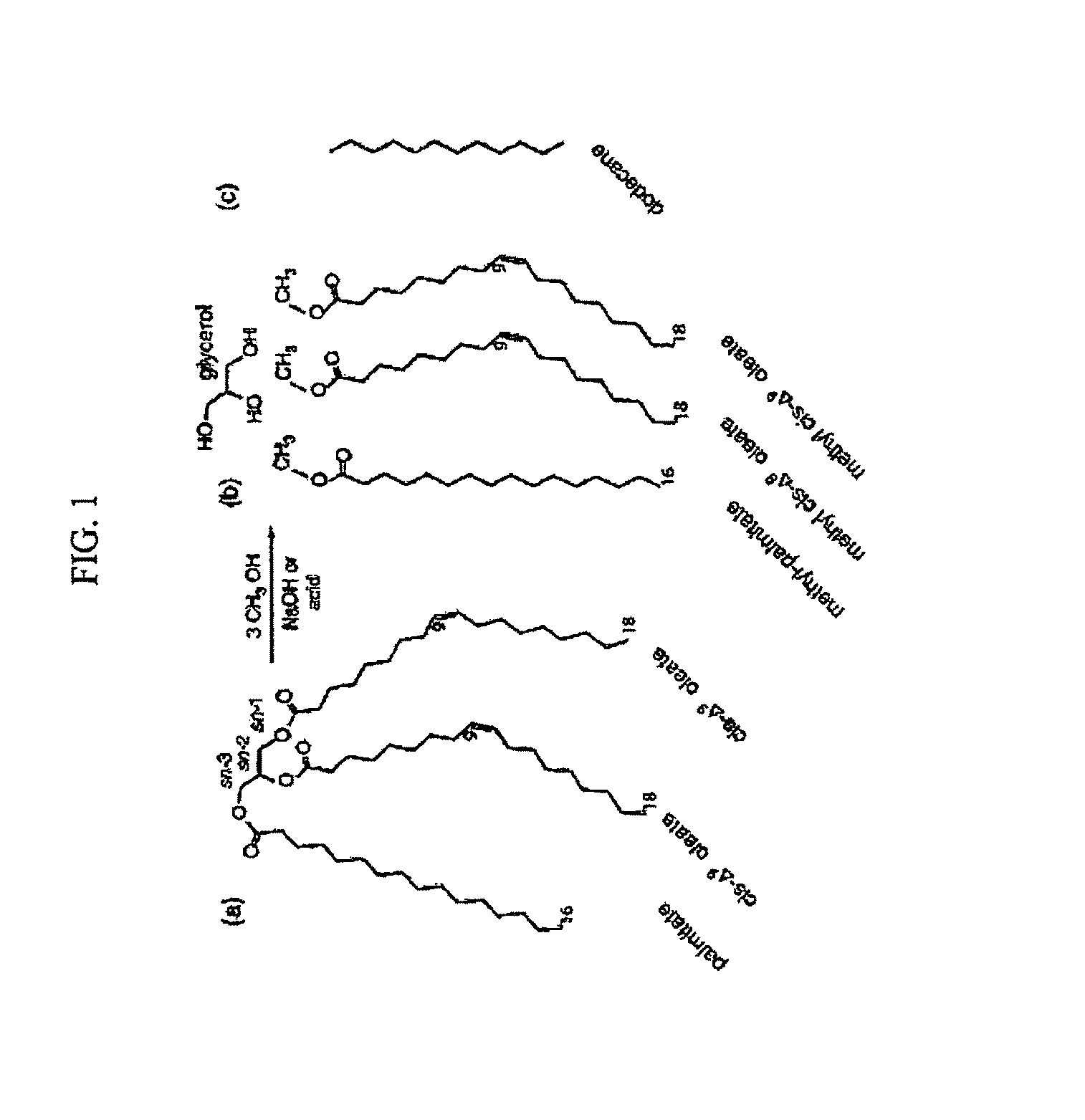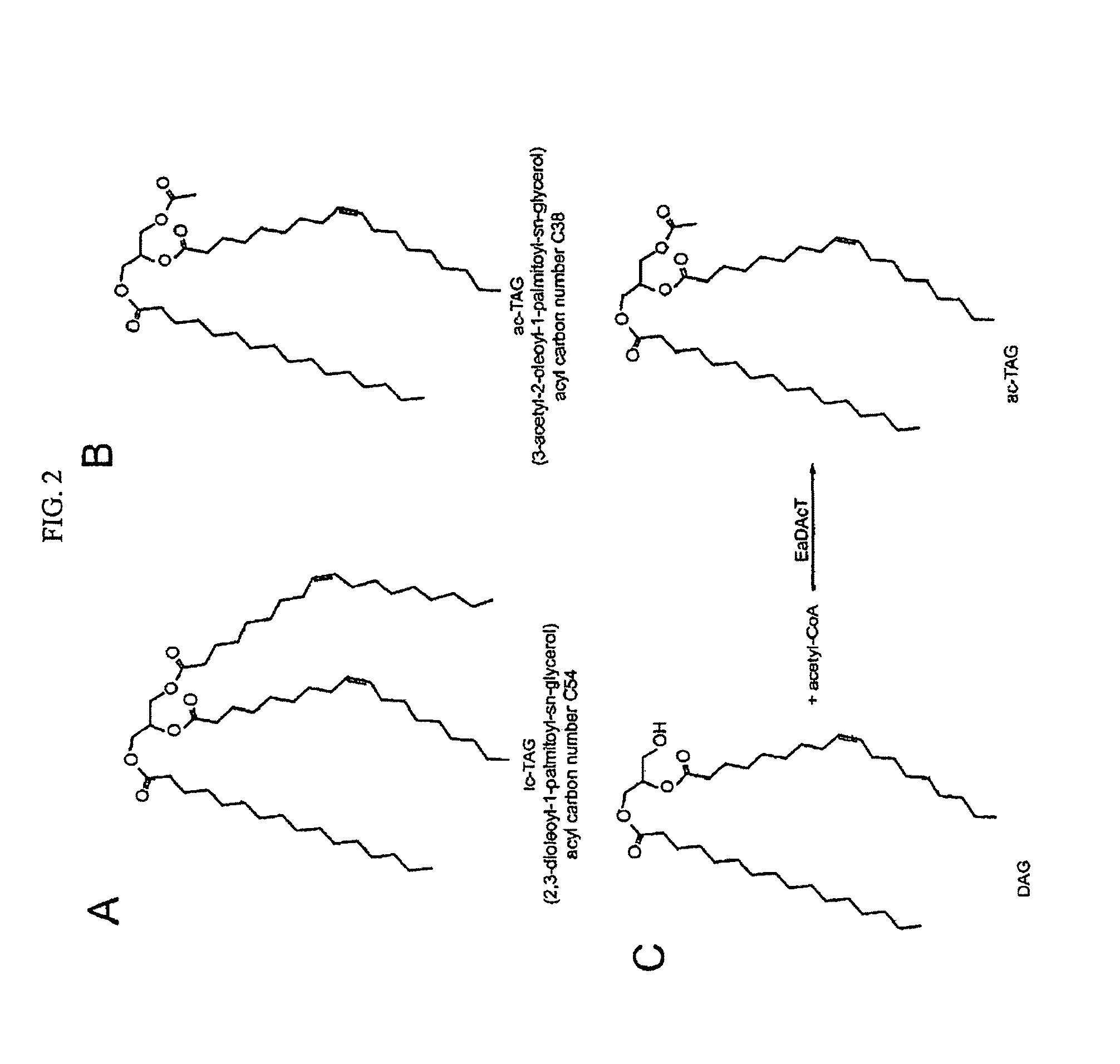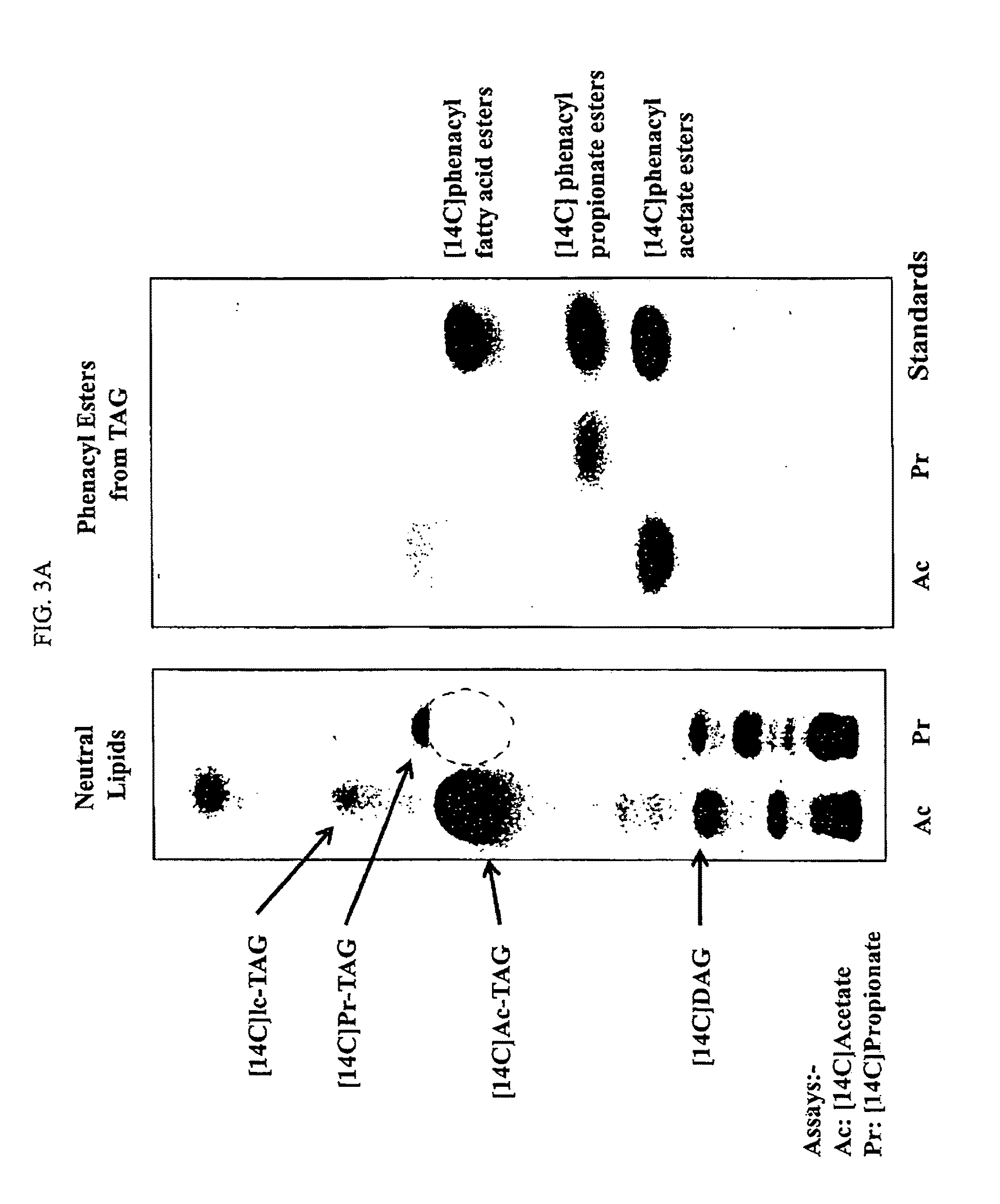Method to produce acetyldiacylglycerols (ac-TAGs) by expression of an acetyltransferase gene isolated from Euonymus alatus (burning bush)
a technology of acetylglycerol and acetyltransferase, which is applied in the field of new diacylglycerol acyltransferase genes and proteins, can solve the problems of limited supply of biodiesel feedstocks, unsuitable for direct use as fuel in unmodified diesel engines, and the wide adoption of biodiesel faces a number of challenges, so as to achieve the effect of increasing the concentration of a segmen
- Summary
- Abstract
- Description
- Claims
- Application Information
AI Technical Summary
Benefits of technology
Problems solved by technology
Method used
Image
Examples
example i
Exemplary Materials and Methods Resulting in the Discovery of an EaDAcT (Euonymus alatus Diacylglycerol Acyltransferase)
[0499]This Example describes exemplary Materials and Methods used during the discovery of an exemplary novel enzyme of the present inventions, including an exemplary diacylglycerol acyltransferase (DAcT) gene and DAcT protein, from Euonymus alatus for use in producing ac-TAGs in host cells and plant parts, including seeds.
[0500]A. Experimental Plant Materials.
[0501]Euonymus alata bushes flower in late May (Michigan, United States) while the onset of the seed maturation phase delayed until August. During maturation the seed coat arils become colored intensely orange. Seed fresh weight, dry weight and lipid accumulation over time (see, FIG. 1., and U.S. Pat. No. 7,429,473, herein incorporated by reference). These weight and lipid accumulations follow a pattern typical for developing oilseeds. Exemplary oil content of Euonymus alata seed at maturity was measured at ap...
example ii
Exemplary Euonymus Alatus Tissues that Synthesize Short Chain (Acetyl)-Tags or Long Chain-Tags in a Tissue Specific Manner
[0528]The inventors tested specific Euonymus tissues for identifying a specific tissue with high levels ac-TAGs and a different tissue with low or lack of ac-TAG production for use in molecular isolation techniques described herein for another attempt in isolating a gene for use in inducing ac-TAG production in plants. Endosperm and the aril tissues of developing Euonymus seeds were chosen for comparison, as described above, lipids were extracted and analyzed (see, FIG. 4, Table 3 below). Analysis of triacylglycerol (TAG) content revealed different TAG compositions between the two tissues: the endosperm synthesized >98% ac-TAGs whereas the aril tissue synthesized >98% long chain TAGs. Furthermore, the difference between aril and endosperm could not be accounted for by low total lipid mass in aril, since both are oil rich tissues.
[0529]While the type of storage li...
example iii
Discovery and Isolation of an Exemplary EaDAcT (Euonymus Alatus Diacylglycerol Acyltransferase) Gene
[0531]With the discovery of tissue specific synthesis of ac-TAGs in Euonymus endosperm in contrast to lc-TAGS in the aril, deep transcriptional profiling was used to compare these two different tissues in order to identify candidate enzyme genes necessary for the production of ac-TAGS. Thus, RNA was extracted from endosperm tissue at different time points during seed development, as well as from aril and embryo tissue at a point during maximal TAG production.
[0532]At least two cDNA libraries were constructed from the RNA extracted from aril tissue and endosperm tissue. These libraries were sequenced using 454 pyrosequencing methods, see details below. When the results were compared and analyzed following sequence analysis of the cDNA, the inventors discovered an exemplary novel membrane-bound O-acyltransferase (MBOAT) gene family member abundantly expressed in the endosperm while abse...
PUM
| Property | Measurement | Unit |
|---|---|---|
| Kinematic viscosity | aaaaa | aaaaa |
| intrinsic viscosity | aaaaa | aaaaa |
| cetane rating | aaaaa | aaaaa |
Abstract
Description
Claims
Application Information
 Login to View More
Login to View More - R&D
- Intellectual Property
- Life Sciences
- Materials
- Tech Scout
- Unparalleled Data Quality
- Higher Quality Content
- 60% Fewer Hallucinations
Browse by: Latest US Patents, China's latest patents, Technical Efficacy Thesaurus, Application Domain, Technology Topic, Popular Technical Reports.
© 2025 PatSnap. All rights reserved.Legal|Privacy policy|Modern Slavery Act Transparency Statement|Sitemap|About US| Contact US: help@patsnap.com



